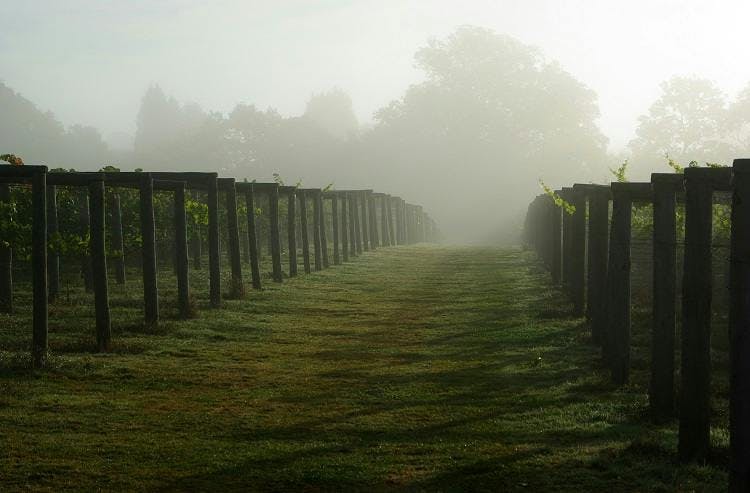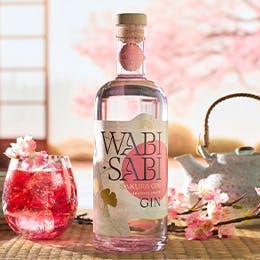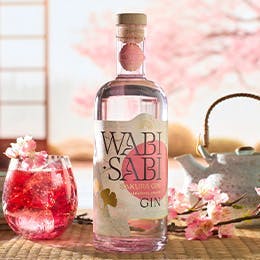Total flexibility, no commitment
A world of unique, crafted gins
Easy, free and reliable delivery

A Global Warming Up to English Wine
Below is an excerpt from the June 2015 edition of GINNED! Magazine about Chilgrove Dry Gin. Every month, Craft Gin Club Members receive a bottle of amazing small-batch gins accompanied by GINNED! Magazine which is full of information about the gin, the distillery and loads of fascinating features.
Global warming is not a phenomenon that most would associate with anything positive. The term conjures up visions of inundated cities, harsh hurricanes, and dying crops unable to support life as we know it. But for the English wine industry, those visions are different. They see sunny days and longer summers in a land notorious for its sporadic rain and gloomy grey skies. With those prospects, one could say that English viticulturists are actually warming up to global warming, the positive effects of which are becoming increasingly apparent for their wines, wines that those beyond their borders have begun to recognise.
International competitions have been pressing medals for English wines almost as quickly as the industry is pressing grapes. At the 2014 International Wine and Spirits Competition (IWSC), the industry stole 80 medals, a record for English wines which have been steadily growing their competitiveness over the years. Winning wineries include the Camel Valley Winery, which has been awarded a gold medal for its 2008 Pinot Noir Rosé Brut, Wiston Estates which has won four gold medals for its Rosé and the Gusbourne Estate which has taken home a medal for each of its six varieties of wine, including two gold outstanding awards, the IWSC’s highest honour.
Restaurateurs in the UK are taking notice of the success of English wines which have been making a splash on the menus of some of the country’s most famous restaurants including those owned by the likes of Gordon Ramsay, Heston Blumenthal, and Jamie Oliver. The White Horse, the UK’s Best Pub and the idea oven of the Craft Gin Club’s grape-based Gin of the Month, Chilgrove Dry Gin, carries a hand-picked selection of English wines from vineyards in Sussex. Roast, a restaurant in London’s Burough Market, featured a prix-fixe menu that paired an English wine with every course during this year’s English Wine Week, celebrated the last week of May.
The push towards provenance in UK food and drink is also pushing the UK public towards their nations wines. Waitrose announced that sales of English wines in 2014 were up 95% on the previous year, upping that figure as of April 2015 when it announced those sales had increased 177% year-on-year.
BUBBLING UP OR FIZZLING OUT?
But despite its recent success, the English wine industry has a very long way to go in terms of catching up with more traditional wine-producing countries. For instance, despite all the buzz around the industry and the public’s shift to locally made products, English wines accounted for a mere 0.14% of the UK wine market in 2014 according to the industry body, English Wine Producers. In production terms, whereas UK vineyards shipped a record 6.3 million bottles in 2014, in 2013 Italy produced approximately 6.8 billion bottles, a production multiple of over 1,000. In monetary terms, DEFRA and English Wine Producers estimate that English wine will generate nearly £100 million in revenues in 2015. But in 2014, UK sales just of Champagne - never mind the other myriad wine imports to the UK - reached £340 million.
The comparison with Champagne, however, goes well beyond sales. To begin, some of the UK’s principle grape-growing regions such as the South Downs have chalky terrain similar to those that give wine from Champagne its signature style. Secondly, despite the fact that due to climate the UK must grow different species of grapes than some of the world’s more famous wine regions such as Bordeaux and Tuscany, the two most planted vines in the UK are Chardonnay and Pinot Noir (21.1% and 19.3% of total UK vines respectively), two of the three grape varieties used to make the famous French bubbly. What’s more, two-thirds of all English wines made are of the effervescent kind.
Today, with changing climates, some think that the weather has warmed enough in the UK’s wine countries to mimic the weather of Champagne. The owner of Dorset’s Furleigh Estate, Rebecca Hansford, told The Guardian that “Global warming has helped. Increasing temperatures mean our climate now has roughly the same number of warm days as they had in the Champagne region in the 1970s.”
These warm days are crucial for British viticulturists according to wine journalist and author Jamie Goode on his online publication, wineanorak.com, and with continued global warming could be a boon for English wines beyond sparkling. Whereas now the UK’s vines produce great fizz like in Champagne, as the temperature edges up in the UK, Goode feels that the island will reach a point where the “most interesting” wines are produced: “close to the limits of where grapes can successfully ripen.” Goode mentions famous wine regions such as Burgundy and Germany’s Mosel Saar Ruwer as examples of regions that produce grapes that don’t grow well in warmer climates such as Languedoc but whose vine species produce very fine wines in cooler regions.
Putting aside the negative environmental impacts that global warming could inflict on the world, all of this news of warmer climates in the UK sounds like a dream come true for English wine producers, producers who will no doubt continue to win awards on an international level. Their success may, in fact, convince another English alcoholic beverage from Sussex winning international medals to rethink its recipe. Chilgrove Dry Gin, the UK’s only gin made with a grape distillate, currently sources its base spirit from the warm wine regions of Spain. Perhaps the gin, which refers to itself as “Gloriously English”, could switch out its Spanish spirit for an English eau de vie made from grapes grown in the chalky soils of the same South Downs from whence it hails.







